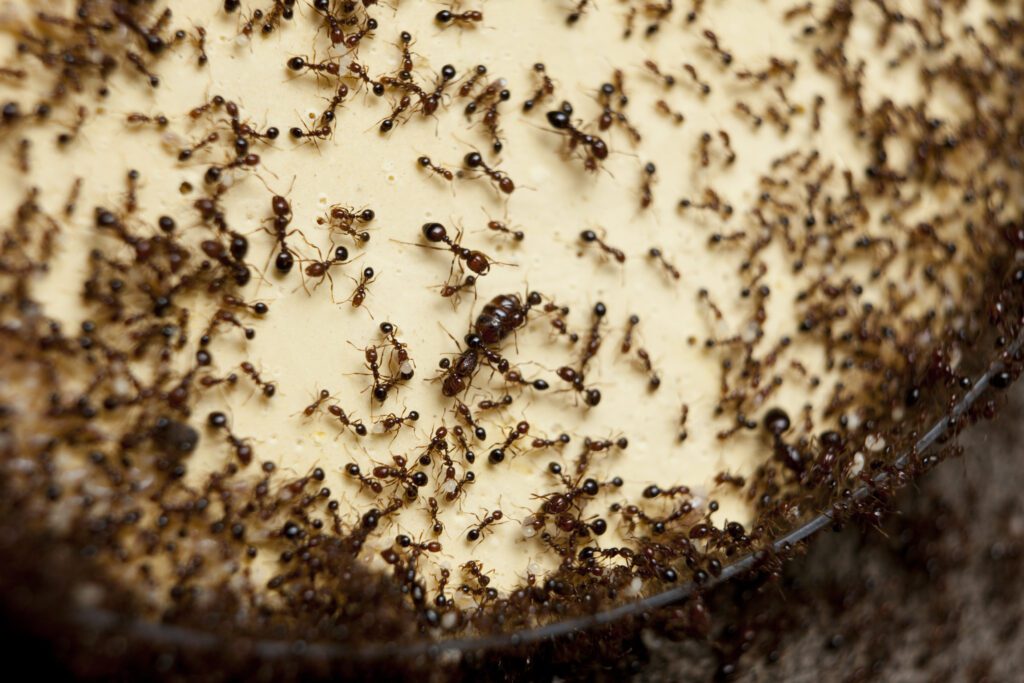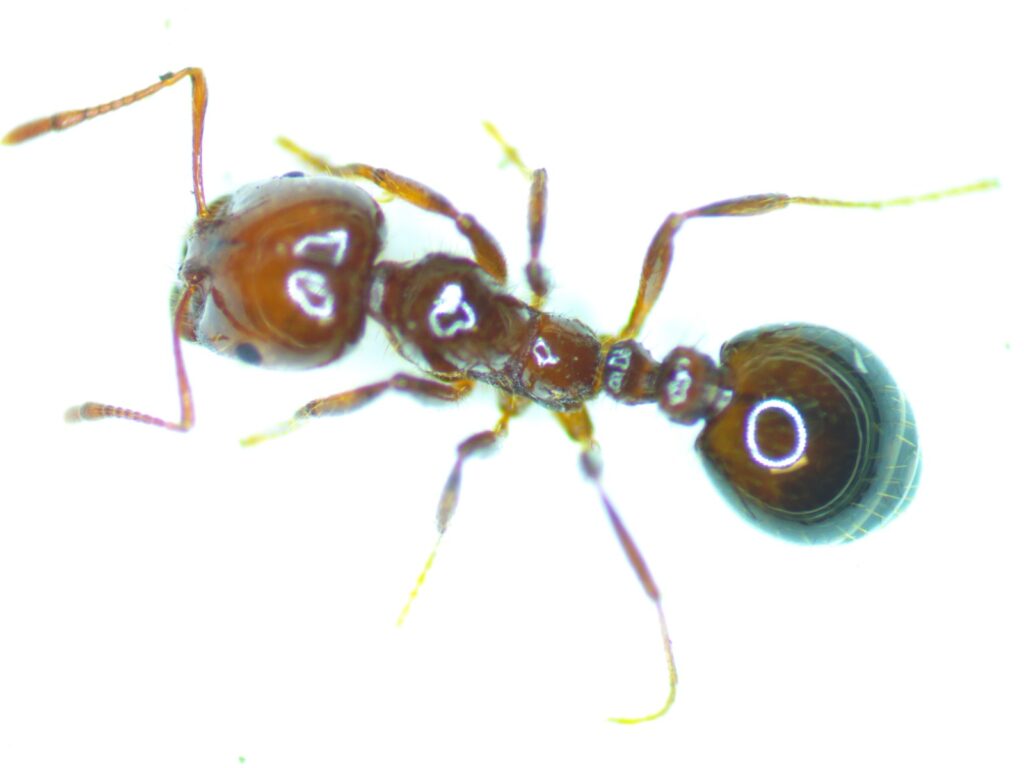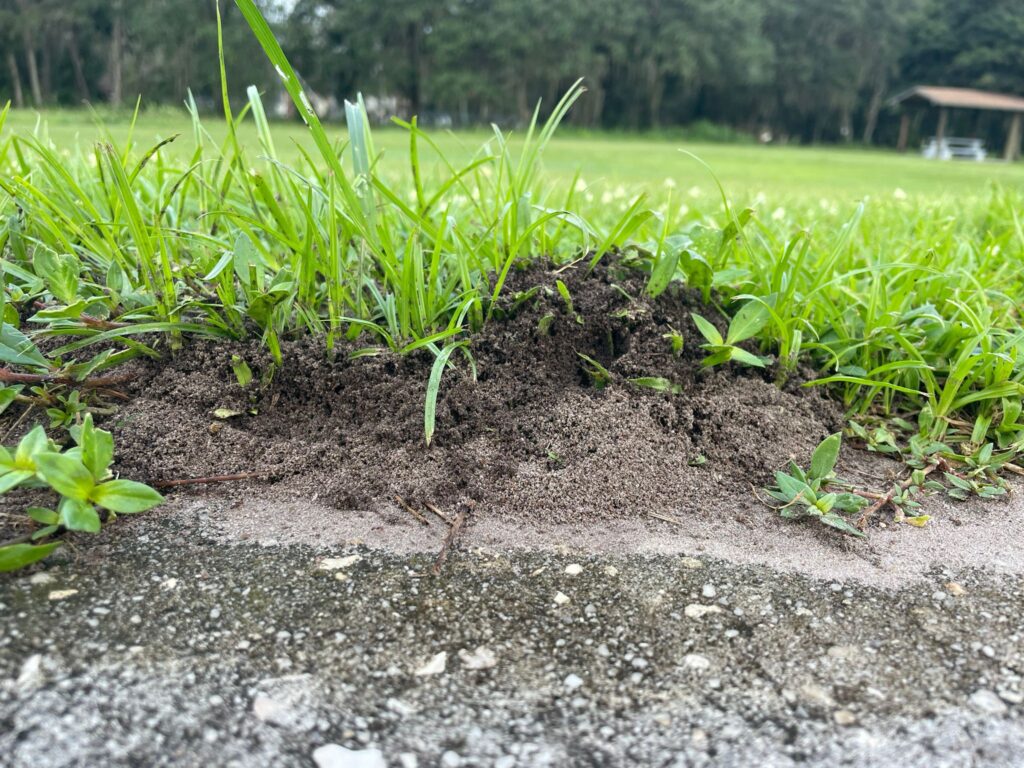Red Imported Fire Ants (RIFA) are aggressive pests that invade homes, farms, and landscapes across the southeastern U.S. These ants are notorious for their painful stings and aggressive behavior. There are two species: the red and black imported fire ants. While the black species is mainly found in Mississippi, Alabama, and Tennessee, the red imported fire ant (Solenopsis invicta) has spread throughout the southeastern U.S., from Texas to the Carolinas.
Description of RIFA
RIFA, originally from South America, first entered Florida in the 1930s. They are identifiable by their red-brown bodies with black abdomens, and their stings cause painful pustules. RIFA live in mounds, typically no larger than 18 inches in diameter, and aggressively defend them from intruders. A colony can grow rapidly, with a queen laying up to 1,600 eggs daily, potentially leading to over 250,000 ants in a mature colony.



RIFA has four types of adult specimens:
- Winged males: Smaller heads and black bodies, mating with females to create new queens.
- Winged females: Fertile and lose their wings after mating to start new colonies.
- Queens: Mated females that lay eggs, often in colonies of thousands.
- Workers: Protect the queen, care for the brood, and forage for food. Workers vary in size and have mandibles with four distinct teeth and a stinger at the tip of their abdomen.
Damage of RIFA
While RIFA helps control some pests, their damage often outweighs the benefits. They can harm crops, damage irrigation systems, and disrupt wildlife, especially ground-nesting species. Their aggressive nature also poses a threat to outdoor activities and the aesthetic value of landscapes. Many ants also feed on honeydew secreted by several groups of insects such as aphids, whiteflies, and soft scales. Ants often defend aphid populations in search of honeydew. Infestations with sap-feeding pests are often identified by observing ants moving up and down on plants.
Controlling RIFA involves several methods:
- Individual mound treatments: Methods like mound drenches, surface dusts, and baits are effective for isolated mounds.
- Broadcast treatments: Granular insecticides or baits can treat larger areas, as ants carry the bait back to the colony.
- Biological control: Predatory mites, parasitic nematodes, and decapitating flies, which target RIFA, are being tested for effectiveness.
Although RIFA is hard to eliminate, reducing their numbers through proper control measures can minimize their impact on crops and the environment.
For more information about RIFA, please read the following “Ask IFAS” Publication called Red Imported Fire Ant, Solenopsis invicta Buren (Insecta: Hymenoptera: Formicidae: Myrmicinae):
Luis Rodriguez is the Polk County Small Farms and Pesticide Education Extension Agent. You can reach him at lrodriguezrosado@ufl.edu or 863-519-1049.

